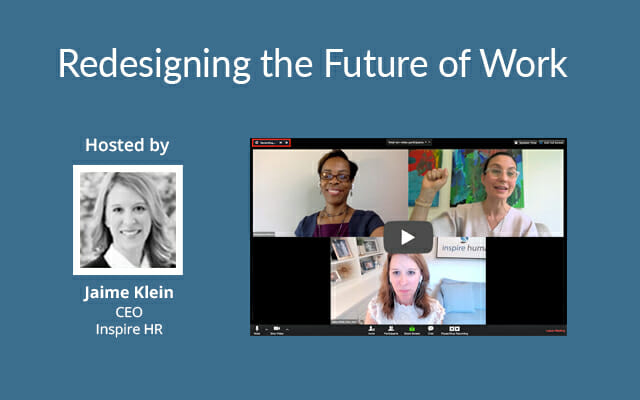
3 Ways to Support Career Pathing (No Matter the Job Market)
Jaime Klein | JUN 17, 2022
Uncertainty. There’s that word again.
Just months ago the HR world was abuzz over how to handle the historic talent shortage facing just about every industry. After all, unemployment remains remarkably low, 4.4 million people quit their jobs in February, and close to 40% of people plan to change jobs this year.
But, wait a minute. Halfway through the year, we’re hearing rumblings of an economic downturn and potential reductions in force (RIFs). Meta, the parent company of Facebook, announced widespread hiring freezes in May. 80% of small business owners are convinced the U.S. will enter a recession this year. And retailers like Target are facing whiplash from new consumer behaviors and rising interest rates.
If you’re wondering just what kind of hiring and retention market we’re in, (and where we might be in three months) here’s some straightforward advice fit for any market:
Show your employees you value them.
Whether your employees are looking for new opportunities outside your company, feeling nervous about hiring freezes or economic predictions, or both, now is the time to reinforce that your company values its team. Double-down on your commitment to map out a career path for your high potential talent for multiple reasons:

- It’s a win-win. Career pathing provides opportunities for advancement for the employee and strengthens succession planning for the organization.
- As Inspire Expert Celia Berk shared recently on “Talent Development in a Changing World of Work,” employees who are recognized as high performers and put onto a clear path for advancement are “on the radar.” This recognition is valuable and would take time to earn at a new company. It’s a powerful retention-booster.
- Career pathing can boost diversity, equity, inclusion, and belonging (DEIB). When we work with our clients on any of the tactics described below, it is always through a DEIB lens.
At Inspire, we find these three ways to support career pathing to be the most effective for talent development:
3 Ways to Support Career Pathing
1. Invest in mentorship programs
The days of one-directional, student-and-teacher-style mentorships are gone. Mentorship programs that are most successful today serve both parties. They introduce junior staff to networks, skills, ideas, and leadership culture. But they also connect executives and directors to emerging trends and engagement techniques for multiple generations and DEIB advocates.
In fact, Cornell University’s School of Industrial and Labor Relations found that participation in a mentorship program significantly improved promotion and retention rates for minorities and women anywhere from 15% to 38% as compared to non-mentored employees. And at GE, a standard-bearer in mentorship, 25% of the company’s top leaders participated in their mentorship programs.
As senior HR practitioners at Inspire, we’re driven by a growth mindset. Whether we’re called in to cover a parental leave, establish an HR department, or initiate a program, we can’t help but mentor, too. As senior HR practitioners, it’s in our DNA. And this mentorship, even informal, is often cited by clients as part of the unintended impact of our engagement. Mentorship opens doors while promoting inclusion and belonging. It’s too powerful to ignore.
2. Offer lateral moves
The world is changing dramatically in the face of climate change, social justice, geopolitics, and you name it. So are people.
Employees are re-evaluating their work-life balance, values, acceptable workload and career goals (which are now often secondary to their life goals). Have you ever wondered what might happen if you helped your employees explore these ideas from inside your company?
Researchers at MIT Sloan found that offering opportunities for lateral moves is 12 times more effective in predicting employee retention than offering a promotion and 2.5 times more important than pay when it came to predicting employee retention. Whether it be through relocation, changing teams, or supporting them in a completely new role, being creative about new opportunities for employees to grow their skills reduces turnover and boosts employee engagement.
3. Maintain Flexible Work Structures
Flexible work policies, including a workplace that helps hybrid and remote workers to feel heard and supported, tells employees that their physical and mental health is valued as much as their labor. Flexibility doesn’t just mean location, either: 95% of knowledge workers want flexibility in when they work, compared to 78% who want flexibility in where they work.
As you structure your future workplace, lead inclusively by seeking employee input and acting on it. Shift from performance management to performance enablement, develop leaders as coaches, and remember that the in-office environment feels different to everyone.

I was recently joined by Julie Wald, MSW, RYT, Founder, CEO and Chief Wellness Officer at Golden and Shatanese Reese, Inspire HR Expert for “Inclusion in a Hybrid Environment.” Both Shatanese and Julie shared some critical nuggets of wisdom, especially:
- Hybrid work environments can advance DEIB in surprising ways. For example, when an employee is being just 2 “squares” away from a leader in a zoom call, they feel more included than they would if the leader were 4 floors away. It can also be a hindrance, though, as it’s harder to catch the informal face-time opportunities and water cooler moments.
- Even as the pandemic shifts over time, people’s stress responses don’t stop. In fact, Julie shared with us that suicides among Americans spiked a full three years after the Great Depression had peaked.
- Revisit tactics like listening circles, town halls, and multidisciplinary task forces that you use to connect with employees on issues like racial inequality and DEIB. These tactics are powerful tools to gather feedback and input in workforce planning, too.
If you feel like the ground is constantly shifting under your feet, you’re not alone. The labor market could see a major shift in the coming months, but most predictions of a recession include a caveat that it would likely be minor. On the flip side, the challenge of finding the right talent to help you realize your future goals isn’t easing up for any HR leader I know.
No matter what comes next, though, career pathing will always serve you and your employees as a retention tool that drives employee engagement.


